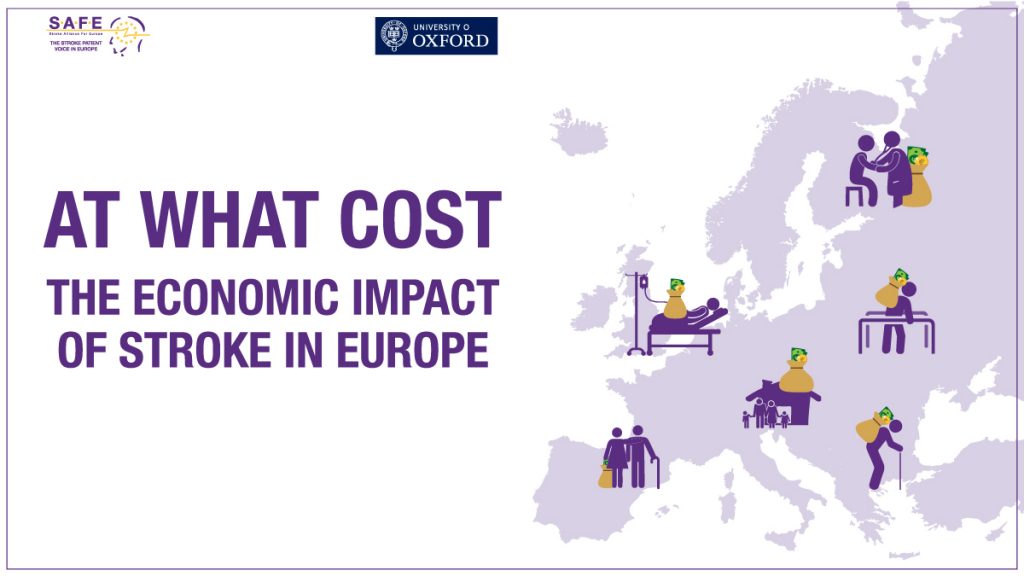
Stroke research is underfunded in compared with other major chronic conditions and spend on stroke care is unclear across Europe.
In the Economic Impact of Stroke in Europe, SAFE set out to identify the full costs of stroke, including economic, societal and social costs. This will enable SAFE and our members to develop a robust case for investment in stroke prevention, care and rehabilitation.
The research was undertaken by the Health Economics Research Centre, University of Oxford and investigates the full current and full costs of stroke across the European Union plus Iceland, Israel, Norway, Switzerland and the UK.
At What Cost – the Economic Impact of Stroke in Europe report adds to the existing evidence that shows stroke care is woefully underfunded. The research shows that the total cost (health care, social care, informal care and productivity losses) of stroke care was €60 billion in 2017. Future costs of stroke care in Europe could increase to €86 billion in 2040 if we fail to invest in stroke prevention, treatments and rehabilitation.
The research was completed before COVID-19. Since the start of the pandemic, services have been diverted away from non-infectious conditions, including stroke care, therefore the projected costs in our report are likely to be even higher.
The report covers:
- current cost of stroke along the whole stroke care pathway, including direct healthcare costs, the costs of informal care and productivity losses due to disability or death from stroke
- projected future stroke costs for the next 20 years
- analysis of three interventions in the latest stroke guidelines
- the treatment of atrial fibrillation to prevent stroke,
- mechanical thrombectomy (the clot retrieval from the blood vessel in the brain) in the acute phase of stroke
- community-based rehabilitation after stroke.
The report concludes that no matter at which point in the stroke pathway you intervene – prevention, treatment, long-term care – there’s likely to be gains to be had in terms of patient outcomes and cost savings.
The full report, summary, factsheet and supplementary data are available to download.
SAFE’s recommendations
In 2017, nearly 1.5 million people suffered a stroke, nine million Europeans lived with a stroke, and more than 430,000 people died due to a stroke in the 32 countries under this study. The total cost of stroke in 2017 was a €60 billion.
The number of new strokes and the number of people living with stroke is set to rise due to ageing population in Europe, as age is the biggest, non-modifiable risk factor for stroke. The costs of stroke are projected to increase by 44% between 2017 and 2040, with some countries seeing rises in stroke-related costs of nearly 100%.
At What Cost – the Economic Impact of Stroke offers solutions to help reduce the burden of stroke and future proof healthcare services at the time when COVID-19 has amplified the problem and exposed already overstretched and failing healthcare systems. SAFE calls on the EU and national governments to make stroke care a priority and ensure it is fit for the future.
European countries should:
- Adopt and implement a national stroke plan
- Invest in stroke prevention, service provision and research
- Accurately collect comparable data
The EU should:
- Adopt a Resolution calling on Member States to implement the recommendations of the Stroke Action Plan for Europe
- The creation of a stroke-specific subgroup in the Steering Group on Health Promotion, Disease Prevention and Management of non-communicable diseases
- Include research into stroke as a key priority in Horizon Europe




